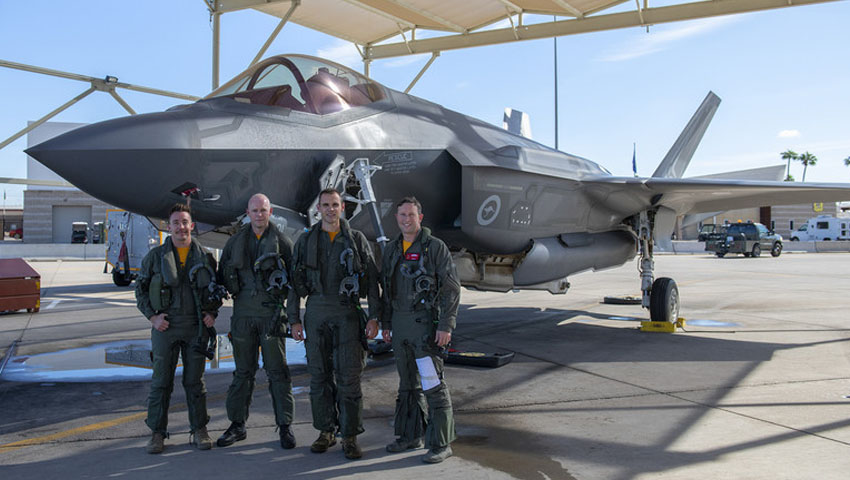After achieving all training milestones, the Royal Australian Air Force began to return F-35A Joint Strike Fighter pilots, maintainers and aircraft to Australia from Luke Air Force Base in December 2019.
The RAAF began training at Luke AFB with the 61st Fighter Squadron and Aircraft Maintenance Unit in December 2014 with two F-35s. Since then, 34 Australian pilots and 16 instructor pilots have earned their certification, and as of January 2020, the RAAF owns 20 F-35s.
Air Commodore Terry Van Haren, Australian Air attaché, welcomed this major milestone for Australia's introduction of the fifth-generation platform: "It’s going to be the start of another great working relationship and will continue what has been one of the most successful alliances in the last hundred years.
"We have achieved a lot in the last five years since we started training here with the 56th Fighter Wing, 944th FW, 61st FS, 61st AMU and Lockheed Martin."
In the future, Australian pilots and maintainers will train in Australia; however, they will remain regular visitors to Luke AFB.
The RAAF plans to transition one of its existing units into an operational F-35 fighter wing within the next three years, said AIRCDRE Van Haren.
Wing Commander Jordon Sander, 61st Fighter Squadron Australian Senior National Representative and new commander of RAAF No. 2 Operational Conversion Unit (No. 2 OCU), explained, "Luke AFB is the RAAF’s F-35A delivery point, and Australian pilots will return several times a year to ferry the country’s new fifth generation fighters to Australia."
On 16 December, the No. 2 OCU, located at RAAF Base Williamtown, Australia, ceased training F/A-18 Hornet pilots and transitioned into an F-35A training squadron – No. 2 OCU will train all future RAAF F-35A pilots and maintainers.
"Working alongside each other has seen the USAF challenge some of our ideas and vice versa. The relationship has helped us look inwards and ask ourselves why we do things the way we do," WGCDR Sander added.
Australia is one of seven nations currently partnered with Luke. The ability to work with other nations creates unique training opportunities for pilots and instructors from both countries.
WCDR Sander explained, "We have lifted each other in training world-class warfighters and, as our pilots return to Australia, they do so with the latest information on F-35 employment and training. When we find ourselves in the skies together during coalition operations, our time at Luke AFB will allow us to effectively integrate in the projection of combat airpower."
The Lockheed Martin F-35 Joint Strike Fighter is billed as a catalyst for the fifth-generation revolution, changing the face and capability of the RAAF and the wider Australian Defence Force.
For the RAAF, the F-35A's combination of full-spectrum low-observable stealth coatings and materials, advanced radar-dispersing shaping, network-centric sensor and communications suites – combined with a lethal strike capability – means the aircraft will be the ultimate force multiplying, air-combat platform.
The F-35A – the variant chosen by the RAAF – will have with a projected life of 30 years in service.
Ten nations are currently flying F-35s, including the US, UK, Italy, Norway, Israel and Japan. The first of Australia’s F-35A aircraft are now based on home soil after a period of training and development at Luke AFB, plus an epic Pacific Ocean crossing in December 2018.
More than 340 F-35s are operating today with partner nations, more than 700 pilots and 6,500 maintainers have been trained, and the F-35 fleet has surpassed more than 170,000 cumulative flight hours.
Over the coming years, Australia will purchase 72 of the advanced fifth-generation fighter aircraft as part of the $17 billion AIR 6000 Phase 2A/B program – which is aimed at replacing the ageing F/A-18A/B Classic Hornets that have been in service with the RAAF since 1985.



